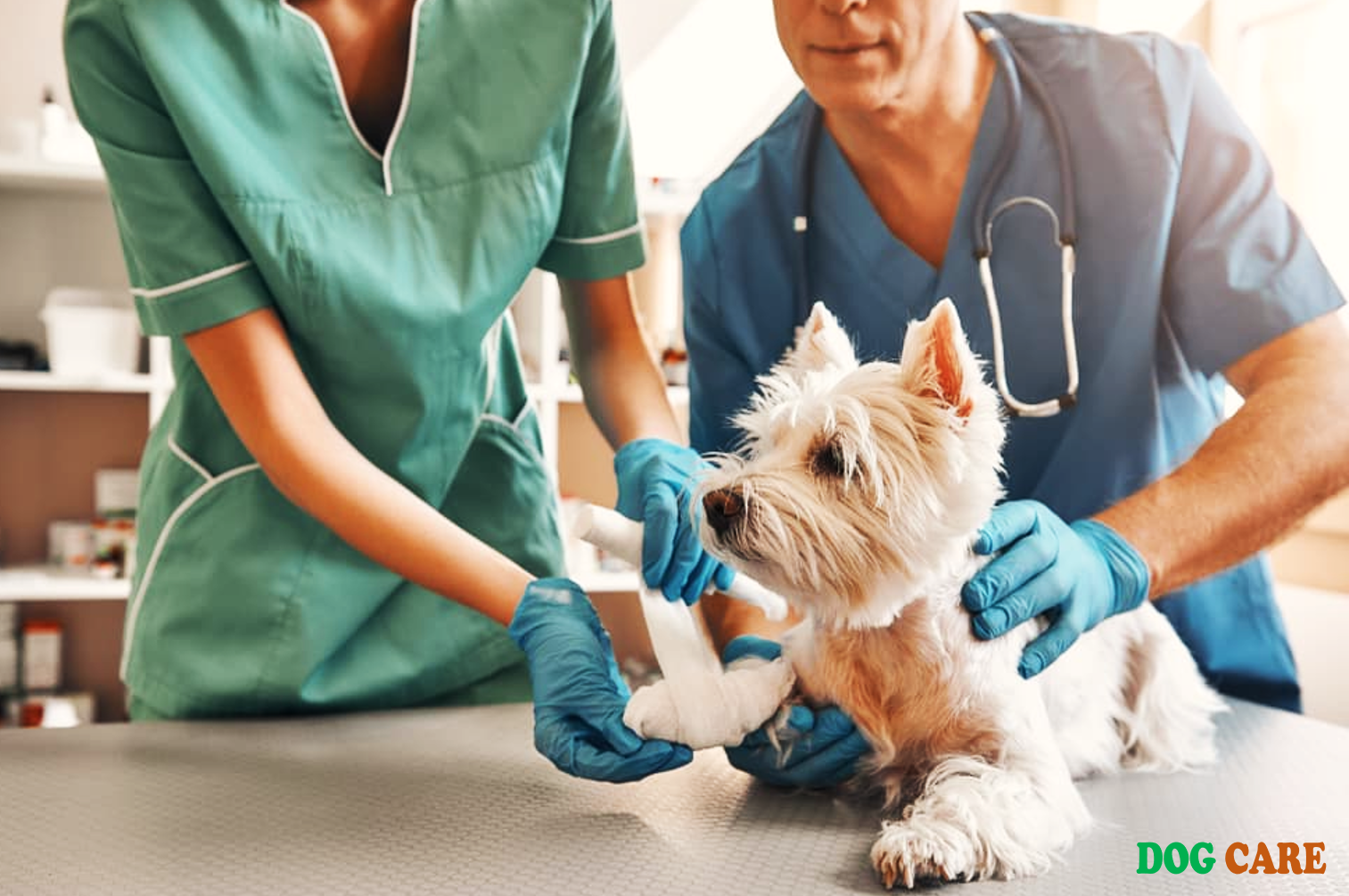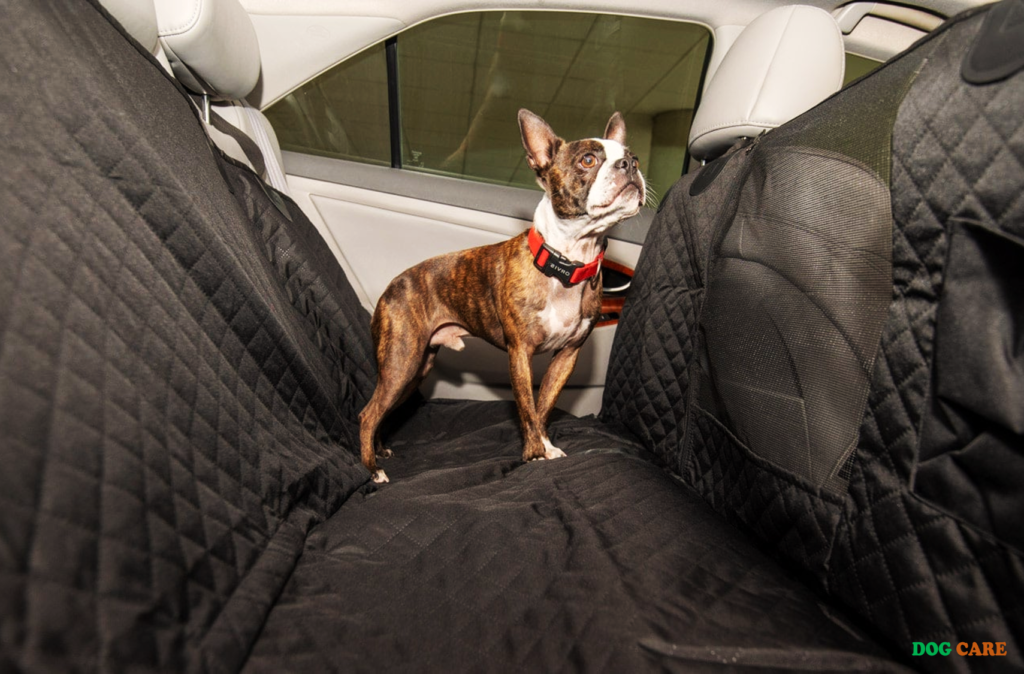Emergency Dog Care : In an emergency, apply first aid and take your dog to a veterinarian immediately. Common emergencies include poisoning, trauma, and choking.
Prompt action is crucial for ensuring your dog’s well-being. When faced with an emergency, having the necessary knowledge and resources can save your pet’s life. As a responsible pet owner, being prepared and knowing the basics of emergency care can make a significant difference.
This article provides essential information and tips for handling various dog emergencies, offering a detailed understanding of what to do during critical situations. By being proactive and informed, you can effectively manage emergency situations, ensuring the safety and health of your beloved furry companion.
Emergency Dog Care : Understanding Canine Emergencies
Being able to recognize and respond to canine emergencies is crucial for every dog owner. Understanding the signs of distress and common emergency situations in dogs can help ensure that prompt and appropriate care is provided when it’s needed the most.
Recognizing Signs Of Distress
Recognizing signs of distress in your dog is essential for early intervention. Here are some indicators to watch out for:
- Rapid or difficulty breathing
- Excessive drooling
- Weakness or inability to stand
- Uncontrolled bleeding
- Pale gums
- Seizures or sudden collapse
Common Emergency Situations In Dogs
Common emergency situations that may arise with dogs include:
- Choking or difficulty breathing
- Severe injuries from accidents or fights
- Ingestion of toxic substances, such as chocolate, xylitol, or certain plants
- Heatstroke or hypothermia
- Severe allergic reactions
- Sudden onset of vomiting or diarrhea
Understanding these scenarios and being prepared to respond appropriately can make all the difference in your dog’s well-being, particularly in critical situations.
Emergency Dog Care : First Aid Basics For Dogs
In an emergency, knowing how to administer first aid to your dog can be life-saving. Understanding the basics of first aid for dogs and having a well-equipped dog first aid kit is essential for every pet owner. From minor cuts and scrapes to more serious injuries, being prepared to provide immediate care can make a critical difference. The following information will help you become prepared to handle common emergencies and potentially save your dog’s life.
Creating A Dog First Aid Kit
Having a well-stocked first aid kit specifically designed for your dog is crucial. Be sure to include the following items in your dog first aid kit:
- Bandage materials such as adhesive tape, gauze pads, and bandage scissors
- Antiseptic wipes or spray for cleaning wounds
- Tweezers for removing splinters or ticks
- Instant cold pack to reduce swelling
- Hydrogen peroxide to induce vomiting (under veterinary guidance only)
- Rectal thermometer to monitor body temperature
- Emergency contact information for your veterinarian and poison control
Administering Cpr To Dogs
If you ever find yourself in a situation where your dog has stopped breathing or has no pulse, administering cardiopulmonary resuscitation (CPR) is crucial. The following is a basic guide for administering CPR to dogs:
- Check for breathing and pulse: Lay your dog on their side and check for breathing and pulse. If there’s no breathing or pulse, then start CPR.
- Give rescue breaths: Extend the head and give two rescue breaths into your dog’s nostrils, ensuring the chest rises. Repeat every 3-5 seconds.
- Perform chest compressions: Place your dog on their right side and position your hands over the chest just behind the elbow. Compress the chest 15 times, then give two rescue breaths.
- Continue CPR: Alternate between compressions and rescue breaths until your dog starts breathing on their own or until you reach the veterinary clinic.
Emergency Dog Care : Handling External Injuries
When it comes to emergency dog care, handling external injuries is crucial to ensure your furry friend receives the necessary treatment and care. Recognizing the signs of external injuries and knowing how to respond can make a significant difference in your dog’s recovery process.
Treating Cuts And Scrapes
Cuts and scrapes are common injuries dogs may experience, especially after engaging in outdoor activities. Prompt treatment is essential to prevent infection and promote healing. Follow these steps to treat cuts and scrapes effectively:
- Start by gently cleaning the wound with mild soap and water.
- Cover the wound with a sterile gauze pad and apply gentle pressure to stop any bleeding.
- If necessary, use an antiseptic solution to prevent infection.
- Monitor the wound for signs of infection such as redness, swelling, or discharge.
Dealing With Fractures And Sprains
Fractures and sprains can cause immense discomfort and immobility for your dog. It’s crucial to provide immediate care and seek professional assistance. Follow these steps when dealing with fractures and sprains:
- Avoid moving your dog excessively if a fracture is suspected to prevent further injury.
- Use a temporary splint or bandage to immobilize the affected area if necessary, ensuring it is not too tight.
- Seek veterinary care promptly to diagnose the severity of the injury and receive appropriate treatment.

Emergency Dog Care : Managing Internal Emergencies
While it’s crucial to be prepared for external emergencies, such as injuries or accidents, knowing how to handle internal emergencies that may affect your dog’s health is just as important. Identifying symptoms of poisoning and responding to choking incidents are essential skills for any responsible pet owner.
Start of Identifying Symptoms of PoisoningIdentifying Symptoms Of Poisoning
Poisoning can occur when dogs ingest or come into contact with toxic substances. It’s vital to be able to recognize the signs of poisoning so that prompt action can be taken. Some common symptoms of poisoning in dogs include:
- Vomiting and diarrhea
- Excessive drooling
- Difficulty breathing
- Seizures
- Unsteadiness or collapse
Response To Choking Incidents
Choking incidents can occur when a dog ingests an object that becomes lodged in their throat. Knowing how to respond in these situations can be life-saving. Follow these steps to help a choking dog:
- Stay calm and approach the dog gently.
- Check the dog’s airway for any visible obstructions.
- If the dog is conscious, perform the Heimlich maneuver by giving sharp thrusts below the ribcage.
- If the dog is unconscious, perform CPR and seek immediate veterinary assistance.
Professional Assistance And Follow-up Care
Professional assistance and follow-up care are crucial components of emergency dog care. After contacting emergency vets, it’s essential to provide post-emergency care and monitoring to ensure your dog’s well-being.
Contacting Emergency Vets
When there’s a critical situation involving your dog, contacting emergency vets immediately becomes a top priority. Find the nearest emergency vet clinic and call ahead to notify them of your dog’s condition, so they can prepare for your arrival. Ensure to keep their contact information readily accessible in case of emergencies.
Post-emergency Care And Monitoring
Once the immediate emergency has been addressed, post-emergency care and monitoring are essential for your dog’s recovery. After receiving professional treatment, ensure to closely follow the veterinarian’s instructions, including administering medications and adhering to any specific care requirements.
- Keep your dog comfortable in a quiet and secure environment to aid in their recovery.
- Regularly monitor their vital signs, behavior, and any changes in their condition.
- Follow up with your regular veterinarian for further evaluation and ongoing care, as recommended by the emergency vet.
Professional assistance and diligent follow-up care are fundamental for ensuring your dog’s health and well-being after an emergency. By promptly contacting emergency vets and providing thorough post-emergency care and monitoring, you can aid in your dog’s recovery and long-term wellness.
Frequently Asked Questions For Emergency Dog Care
What Are The Common Emergency Situations For Dogs?
Injuries, choking, seizures, poisoning, and heatstroke are common emergency situations for dogs. It’s important to be prepared and know how to respond in these situations.
How Can I Perform Cpr On My Dog?
If your dog is unresponsive, lay them on their right side and apply firm compressions to their chest. For a small dog, use one hand; for a larger dog, use both hands. Check for breath and pulse periodically.
What Should I Include In A Dog First Aid Kit?
A dog first aid kit should include gauze, adhesive tape, tweezers, scissors, antibiotic ointment, a blanket, and a muzzle. Include contact information for your vet and pet poison control center.
Conclusion : Emergency Dog Care
Being prepared for emergencies is crucial for dog owners. By having the right information and supplies on hand, you can be ready to handle any situation. Remember to stay calm and seek professional help when needed. Your proactive approach can make a significant difference in your dog’s well-being during an emergency.


